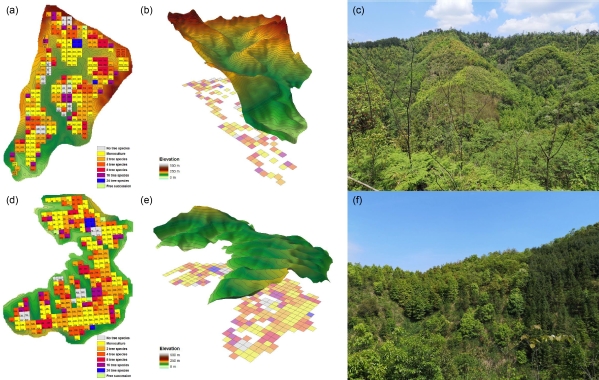Overall Wood Decomposition Does Not Happen With Only Tree Species Richness
Deadwood contains 10-20% of the global forest carbon stocks, and variations in their decomposition rate produce a huge impact on regional and even global carbon emissions. To achieve the goals of global carbon neutrality in 2050 and climate neutrality in 2067, many countries have adopted afforestation as a crucial way to enhance natural carbon sinks. However, various anthropogenic factors, such as afforestation methods and tree species selection, may accelerate the decomposition rate of woody debris and undermine the efficiency of natural carbon sinks. Therefore, it is of vital significance to explore the effects of tree species richness on decomposer activities and decomposition rates, which will provide scientific guidance for afforestation so as to reduce carbon emissions.
On May 28, the team led by Prof. YU Mingjian at College of Life Sciences , Zhejiang University published an article titled “Tree species richness increases spatial variation but not overall wood decomposition” in the journal Soil Biology and Biochemistry. Using the Biodiversity-Ecosystem Functioning Experiment China (BEF-China) experimental platform, the researchers carried out an extensive investigation into the relationship between tree species richness and wood decomposition.
The researchers found that plot species richness increased the spatial variation of wood decomposition but decreased its mean rate (Fig. 2). At a finer spatial scale, neighborhood tree species richness could decrease termites activities during the early decay stage by lowering understory temperature and thus reduce wood decomposition rates. Moreover, different combinations of neighborhood tree species resulted in a significant distinction among microhabitats, which in turn led to spatial heterogeneity in decomposer activities and eventually wood decomposition rates. As resource limitation of woody debris was alleviated and the diversity of wood decay stages was increased in later decay stage, neighborhood tree species richness finally promoted the performance and decomposition activities of termites and fungi, thereby contributing to the stable coexistence of the two competing taxa for a longer period of time.
This study highlights that in young and regenerating subtropical forests where termites are major wood decomposers, tree species richness could remarkably reduce wood decomposition rate, thus effectively mitigate carbon emissions. Furthermore, tree species richness could promote the spatial heterogeneity of wood decomposition, which could contribute to the diversity and long-term coexistence of decomposer communities.
This study has important implications for guiding forest management policies regarding carbon sequestration and biodiversity maintenance in the forest ecosystem.

